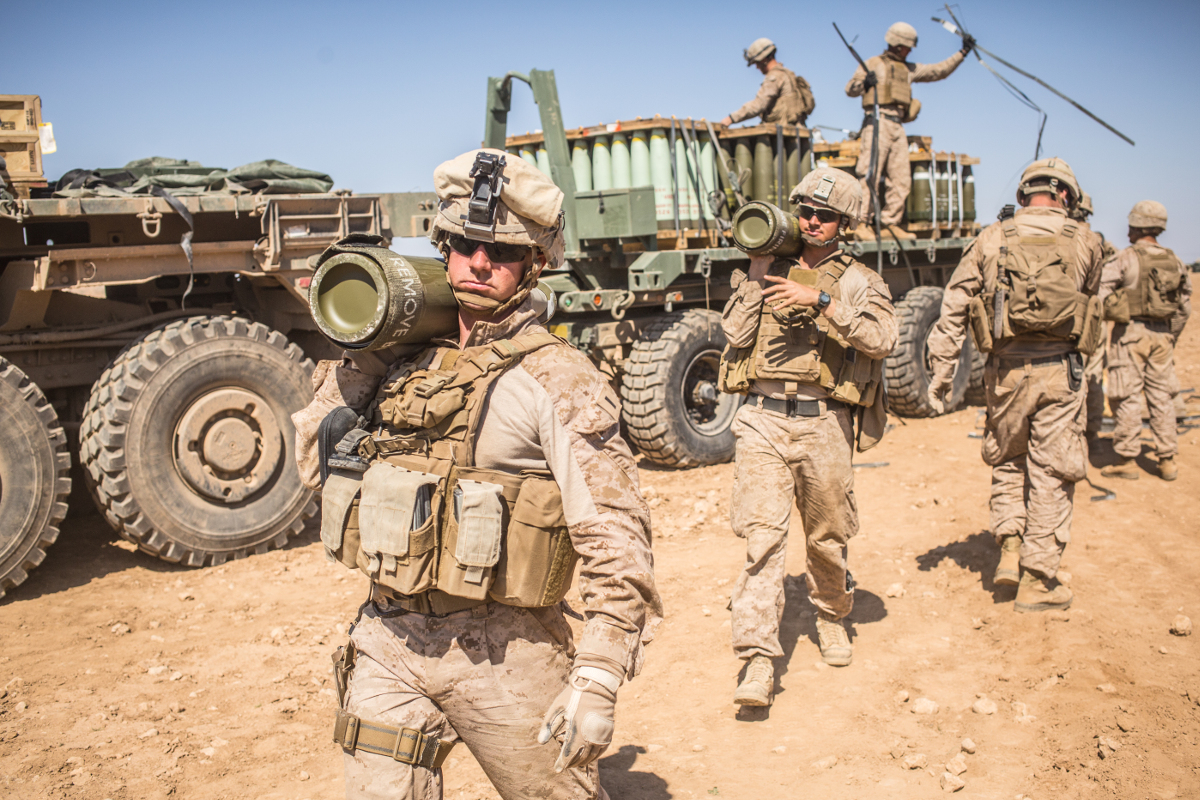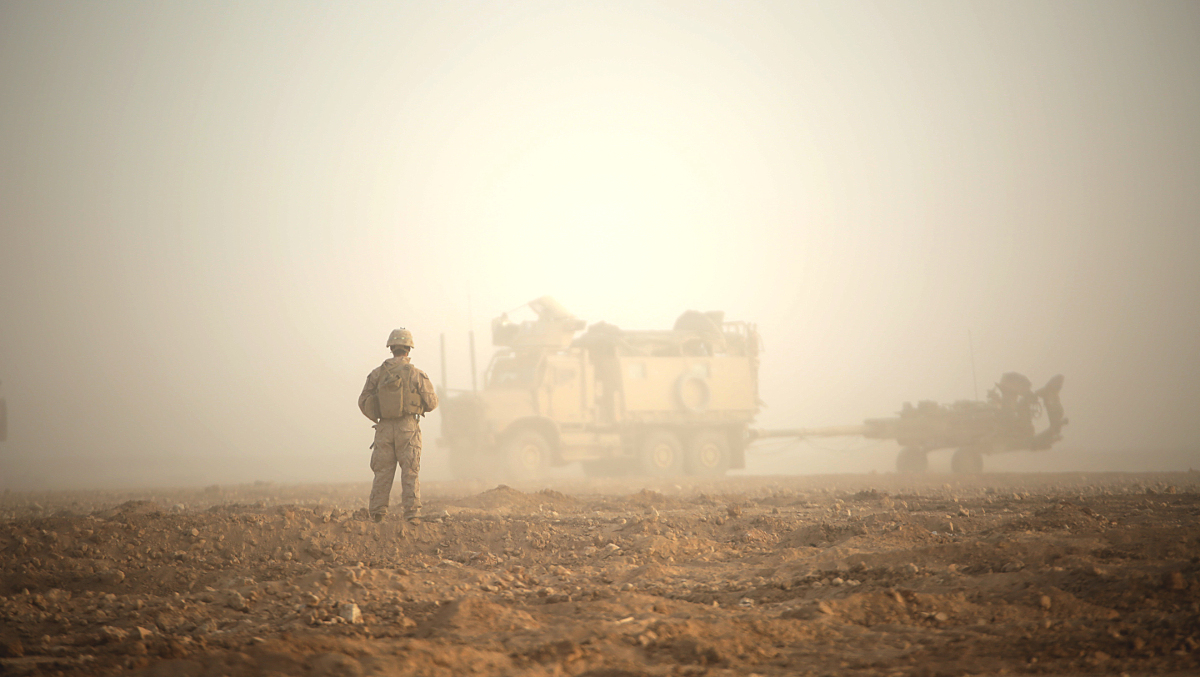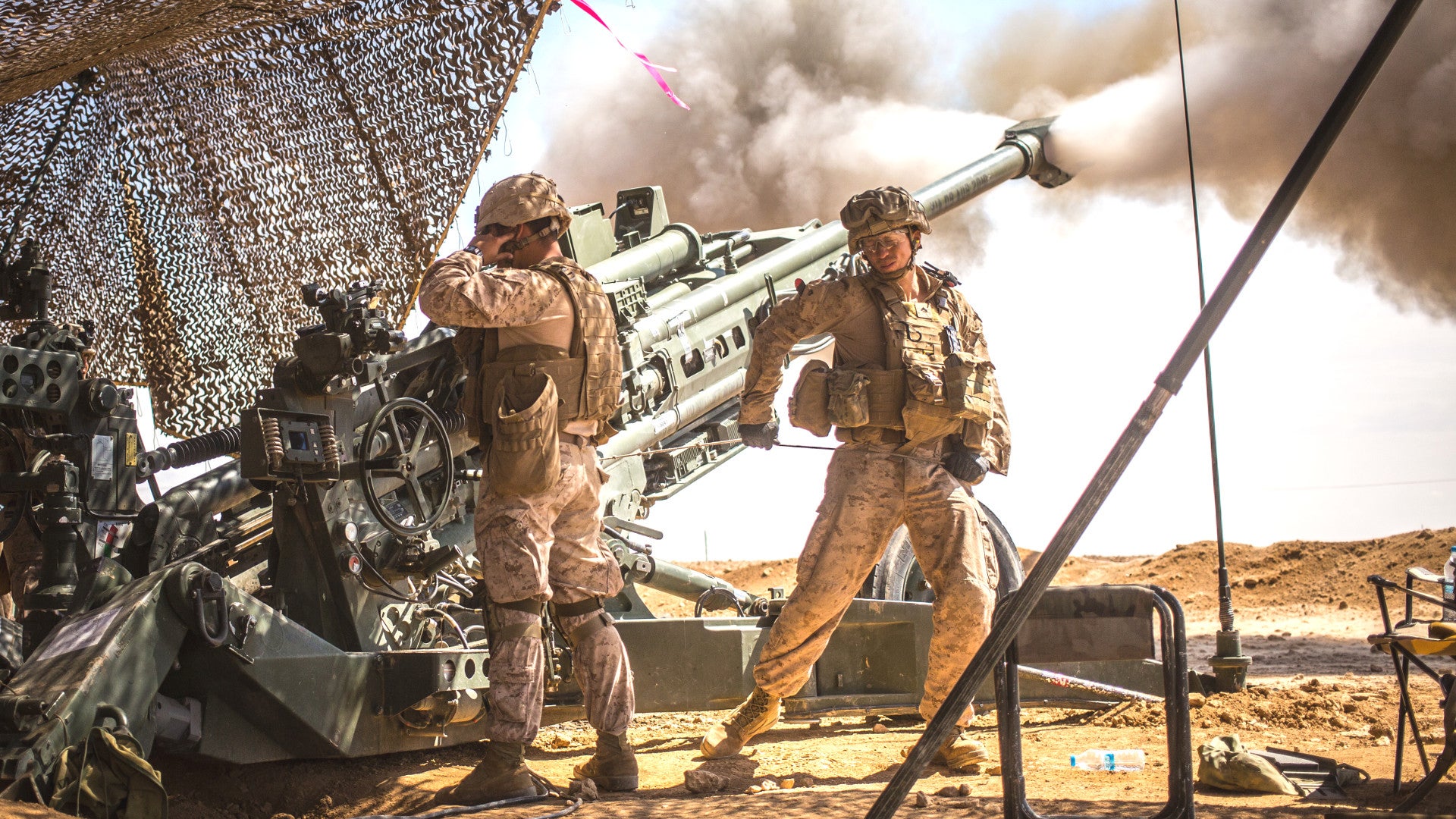The U.S. Marine Corps’ artillery support for U.S.-backed forces fighting in the Syrian city of Raqqa was reportedly so intense that units on the ground “burned out” the barrels on two of their M777 155mm howitzers during the effort to liberate the city, rendering them unsafe to use. The unprecedented volume of fire underscores the vital role the long range guns, as well as guided rockets and even mortars, have played in the campaign against ISIS in both Iraq and Syria, something often overshadowed by withering air strikes against the terrorist group.
U.S. Army Sergeant Major John Wayne Troxell, who presently serves as the senior enlisted adviser to the Chairman of the Joint Chiefs of Staff U.S. Marine Corps General Joseph Dunford, gave this impressive detail to reporters on Oct. 30, 2017, according to Marine Corps Times. Troxell had recently returned earlier in the month from a trip to the Middle East that included four hours on the ground in or around Raqqa.
“Every minute of every hour we were putting some kind of fire on ISIS in Raqqa, whether it was mortars, artillery, rockets, [High Mobility Artillery Rocket Systems], Hellfires, armed drones, you name it,” Troxell said. “What we have seen is the minute we take the pressure off of ISIS they regenerate and come back in a hurry.”
Troxell did not say how many rounds the Marines had fired from their howitzers specifically or over what time span. The U.S. military does not have an average barrel life for the M777, either, since a variety of factors can impact how fast the tube wears out.

Firing heavier shells, using more propelling charge to hit targets at longer ranges, and environmental conditions can all impact the speed at which the barrels’ rifling and overall internal structure erodes, impacting both range and accuracy and ultimately making the weapons dangerous to use. The U.S. Army has a manual for calculating whether or not a unit should send the tube back to the depot for repair, but it is not available to the public.
With a maximum range using regular ammunition of approximately nearly 20 miles, the Marines may have been firing every round with the highest allowable powder charge to keep themselves as far away from the actual combat as possible. In March 2016, a member of a Marine artillery unit died in Iraq after their fire base came under ISIS attack.
We also don’t know how long it took the Marines in Syria to reach this breaking point. In March 2017, it emerged that the Corps had quietly deployed an artillery unit north of Raqqa, as the American-supported Syrian Democratic Forces (SDF), worked to clear ISIS from the surrounding areas. On May 16, 2017, though, the U.S. military publicly stated that a new Marine artillery unit was in Syria specifically to support the offensive into the city, which the terrorists had claimed as their de facto capital, though they did not say when it had arrived exactly.

There’s a lot we still don’t know about the Raqqa campaign as a whole, where outside media and advocacy groups had little to no access and had to rely heavily on witness statements and official reports. There were concerns by July 2017, that the offensive had stalled in the face of heavy ISIS resistance and the terrorist group’s extensive use of tunnels and booby traps.
There had already been a noticeable uptick in the aerial bombardment leading up to the initial assault, along with reported civilian casualties, as the fighting became more protracted. It still seems that air and artillery strikes, along with the increased presence of American special operations and conventional forces, were enough to break the stalemate, though some have suggested it could be a Pyrrhic victory since the city has suffered extensive damage since ISIS took control in 2013.

But even without knowing the specifics, Troxell’s comments speak to how important traditional tube artillery, as well as the High Mobility Artillery Rocket System, or HIMARS, and its 227mm guided rockets, have been in operations against ISIS in Iraq and Syria and their continued relevance to American military operations in general. Though often overshadowed by the air war, these ground weapons can be more versatile in many situations, something we at The War Zone have noted
many times in the past.
Properly positioned artillery units can often provide support much faster than calling for close air support, especially if no aircraft are already on station over the target area. Howitzers and rocket launchers can still fire in bad weather that might ground fixed wing combat aircraft or gunship helicopters, as well.
And against point targets, the M777 combined with GPS-guided shells can provide just as precise support. Though there is a special precision guided 155mm round, the M982 Excalibur, official photos and video of Marines fighting ISIS have shown them using the M1156 Precision Guidance Kit.
This unit slots into any 155mm shell where a normal fuze would go to quickly turn it into a precision munition. This system is simpler and cheaper than Excalibur, but is also less accurate. A round with the M1156 can hit, on average, within 100 feet of the target depending on how far away it is, while the M982 regularly strikes fewer than 20 feet from the point of impact that troops program into its guidance system.
The responsiveness and precision of American artillery units has clearly been invaluable, especially in urban areas like Raqqa where ISIS fighters and friendly forces were extremely close together in areas where innocent bystanders might have also been present. In such a fluid situation, crews manning howitzers and rocket launchers might have been better positioned to adjust their fire rapidly to target militants as they fell back and took up new positions.

The unprecedented use of the M777 in Iraq and Syria in particular might be part of why both the U.S. Army and Marine Corps are looking to refit their guns with full-bore chrome-lined cannon tubes. In August 2017, the Army said that the Watervliet Arsenal in New York was working on a 100 of these new barrels for each service.
The refitted howitzers will reportedly have almost 50 percent greater barrel life over weapons with the original all-steel types. The Marines first tested the modified design in 2016 and Watervliet expects there will be more orders in the future.
“Given that there are more than 1,000 of these gun systems in the Army and Marine inventory,” George Roach, the product manager for the chrome barrel program at Watervliet, said in August 2017. “There is potential for the arsenal to receive more orders for full-bore chrome barrels as these orders only reflect about 20 percent of the inventory.”

Unfortunately, the Marines don’t expect to receive the first new barrels until 2019, “given the long lead time to procure raw stock materiel,” according to the Army. So units in Iraq or Syria probably won’t be seeing refitted howitzers any time soon.
Hopefully, with ISIS fully on the defensive, the fighting will slow to the point where M777 crews can get replacement parts or guns – or new units can take over – before anyone burns out another barrel.
Contact the author: joe@thedrive.com
